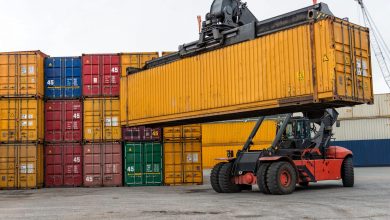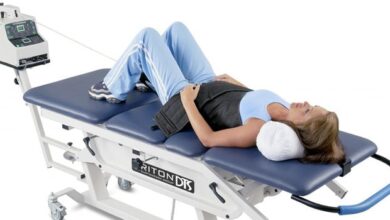Understanding Environmental Equipment & Supply: Protecting the Planet with the Right Tools

In today’s world, environmental concerns are more pressing than ever. Whether it’s combating climate change, improving air and water quality, or managing waste, the need for effective environmental management is crucial.
Environmental equipment and supply refers to the range of tools, devices, and materials designed to protect and manage the environment.
From pollution control systems to waste treatment solutions, this equipment plays a key role in maintaining a healthy and sustainable planet for future generations.
What is Environmental Equipment & Supply?
Environmental equipment and supply encompass the tools, machinery, and technologies used to monitor, manage, and mitigate the impact of human activities on the environment.
These products are designed to handle a variety of environmental concerns, including air quality, water treatment, waste management, and land conservation.
By integrating these tools into everyday operations, industries, municipalities, and individuals can reduce their environmental footprint and contribute to sustainability efforts.
Tools & Equipment Used For Core Diamond Drilling
Types of Environmental Equipment & SupplyAir Quality Monitoring Equipment
Air pollution is a major environmental challenge that affects human health and the ecosystem. Air quality monitoring equipment helps track the concentration of pollutants in the atmosphere, including particulate matter (PM), carbon dioxide (CO2), sulfur dioxide (SO2), nitrogen oxides (NOx), and volatile organic compounds (VOCs).
These devices help regulators, businesses, and environmental agencies make informed decisions to improve air quality and reduce emissions.
Common air quality monitoring equipment includes:
- Air Samplers: Collect samples of air to analyze the concentration of various pollutants.
- Gas Detectors: Identify specific gases in the air, providing real-time readings of air quality.
- Particulate Counters: Measure the level of dust, smoke, and other fine particles in the air.
SEO: 9 Free Tools to Find the Right Keywords
Water Treatment Equipment
Clean water is essential for health, agriculture, and industrial processes. Water treatment equipment is designed to remove contaminants from water, ensuring it is safe for consumption and use.
These systems are used by municipalities, industries, and agricultural operations to treat wastewater, purify drinking water, and manage stormwater.
Key water treatment equipment includes:
- Water Filtration Systems: Use filters to remove particles, chemicals, and bacteria from water.
- Reverse Osmosis Units: Employ a semi-permeable membrane to remove dissolved salts, bacteria, and other impurities from water.
- UV Water Disinfection Systems: Use ultraviolet light to kill harmful microorganisms in water.
Must-Have Tools and Equipment for Creating YouTube Videos
Waste Management Equipment
Proper waste management is essential for maintaining a clean environment and conserving natural resources. Waste management equipment helps reduce, recycle, and safely dispose of waste materials.
This equipment is used by municipalities, businesses, and households to manage solid waste, hazardous waste, and recycling efforts.
Common waste management equipment includes:
- Compactors and Balers: Compress waste materials like cardboard, plastic, and paper to reduce volume and make them easier to transport and recycle.
- Waste Separation Systems: Separate different types of waste (e.g., plastics, metals, organic waste) for recycling or disposal.
- Hazardous Waste Containers: Store and safely dispose of hazardous materials, such as chemicals and medical waste.
A Guide to Choosing the Right Equipment Rental Service
Soil and Land Conservation Equipment
Soil conservation is essential for maintaining fertile land and preventing erosion. Land conservation equipment helps manage soil health, prevent contamination, and promote sustainable farming practices. This equipment plays a critical role in agriculture, forestry, and land restoration projects.
Types of soil and land conservation equipment include:
- Erosion Control Blankets: Protect soil from wind and water erosion by stabilizing the surface.
- Soil Remediation Equipment: Remove pollutants, such as heavy metals and petroleum hydrocarbons, from contaminated soil.
- Irrigation Systems: Efficient irrigation technology helps conserve water and promote sustainable agriculture.
How to Choose the Right Restaurant Equipment for Your Business
Noise Pollution Control Equipment
Noise pollution is an often-overlooked environmental issue, particularly in urban areas and industrial zones. Noise control equipment is designed to reduce or eliminate unwanted sounds, protecting human health and preserving wildlife habitats.
Key noise control solutions include:
- Sound Barriers: Walls or fences that block or deflect sound from roads, highways, and industrial sites.
- Acoustic Enclosures: Enclose machinery or equipment to reduce noise emissions in factories or construction sites.
- Noise Meters: Measure the level of noise pollution in a specific area, helping assess the need for noise reduction strategies.
The Importance of Environmental EquipmentProtecting Public Health
Proper environmental equipment ensures that harmful pollutants do not contaminate the air, water, or soil.
By monitoring and controlling emissions, water contaminants, and waste, these tools help prevent health risks like respiratory problems, waterborne diseases, and exposure to hazardous chemicals.
Promoting Sustainability
Environmental equipment helps businesses and industries adopt sustainable practices by enabling them to reduce waste, conserve resources, and minimize environmental impact.
These tools are key to achieving sustainability goals and adhering to environmental regulations.
Facilitating Regulatory Compliance
Environmental regulations are increasingly strict, and non-compliance can result in hefty fines or legal consequences.
Using the right environmental equipment ensures that businesses, municipalities, and industries meet regulatory standards for emissions, waste disposal, water quality, and more.
Enhancing Environmental Awareness
The availability of environmental equipment also raises awareness about the importance of sustainable practices. As individuals, communities, and businesses become more conscious of their environmental impact, they are more likely to adopt eco-friendly measures.
Choosing the Right Environmental Equipment & Supply
Selecting the right environmental equipment depends on several factors, including:
- Specific Needs: Assess your environmental concerns—whether it’s air pollution, waste management, water quality, or land conservation.
- Quality and Reliability: Choose equipment from reputable suppliers with proven track records in durability and performance.
- Compliance with Regulations: Ensure the equipment meets local and national environmental standards and regulations.
- Budget: Consider both initial cost and long-term maintenance when choosing equipment.
Conclusion
Environmental equipment and supply are essential in the fight to protect the planet and promote sustainability.
Whether you’re addressing air quality, water treatment, waste management, or soil conservation, the right tools enable businesses, governments, and individuals to make a positive impact on the environment.
By integrating environmental equipment into everyday operations, we can reduce pollution, conserve natural resources, and help build a cleaner, healthier, and more sustainable world.




